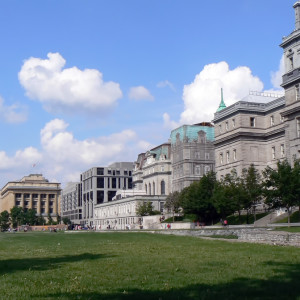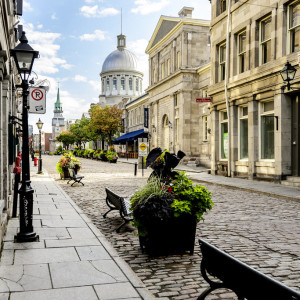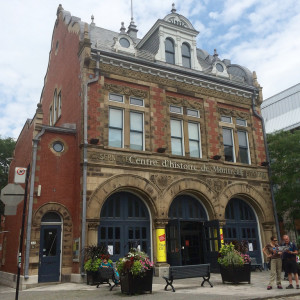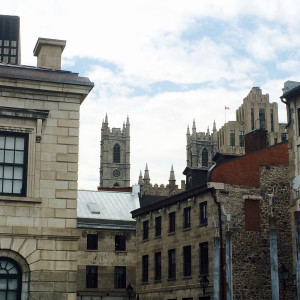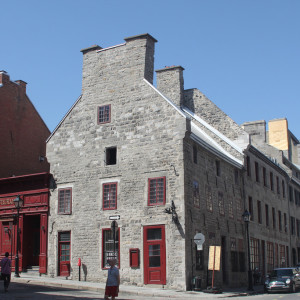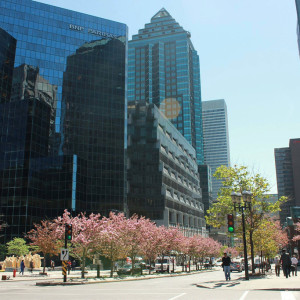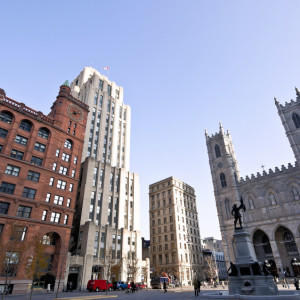Tour Details
Duration
3 hours
Product Type
Tour
Venues
- Place d’Youville
- Place d'Armes
- Notre-Dame Basilica
- Montreal World Trade Centre
Select a date
Tour Description
How did Montreal go from a fur-trapping town to the cosmopolitan heart of Quebec? This three-hour Old Montreal tour visits key sites, including Place d'Armes, and is designed to provide an in-depth introduction to the city's history. Led by a local historian, architect, or other local expert, we'll peel back the layers of the city from its French and English colonial roots to today's cultural capital.
Old Montreal Walking Tour
Our walk will begin at the very spot where Montreal was founded, Place d’Youville, where we’ll explore the reasons why the St. Lawrence Iroquoians, fur traders, and Sulpician priests chose to make their home here, as well as how urban planning affected the city’s growth. Our walk will also introduce us to the nature of the ecclesiastical presence in the city and the competing power structures of Jesuits and Récollets. We may then stop by the house of Simon McTavish, chief founding partner of the North West Company. Here we will discuss the importance of the fur trade, the fierce competition between the North West Company and the Hudson Bay Company, the coureurs de bois, and trade patterns under British rule.
Wealth and Architectural Splendor
We'll then move on to Rue Saint-Jacques, called the "Wall Street of Canada" in the early 20th century, where we'll look at the rise of Canadian financial institutions, illustrated by such buildings as the grandiose former banking hall of the Royal Bank of Canada. The street also includes the Montreal World Trade Centre, a restoration project from 1992 that won prizes for integrating old façades with new buildings, synthesizing something distinct from the two.
Place d'Armes
We'll then make our way to Place d'Armes, arguably the most important site in Old Montreal. It includes Notre-Dame Basilica, the Sulpician seminary, the headquarters of the Bank of Montreal, and a collection of amazing architecture from the 17th to the 20th centuries. Our path will lead us to Champ de Mars, where we can see the remnants of Montreal's old fortifications and the changing nature of conflict in the colony, from battles with the St. Lawrence Iroquoians to wars with the British and Americans.
Along our way, we’ll also discuss later disputes such as the rebellions of 1837-38, linguistic divisions, and the conflict between urban and rural business interests, or how the railway eventually unified the two former provinces of Upper and Lower Canada. This will take us into a conversation about Montreal in the 20th century, as Toronto has grown to become the largest city in Canada.
Take Aways
At the conclusion of this walk, we will have a comprehensive understanding of Montreal’s colonial history, from the fur trade to the urban and industrial forces that have shaped the city into the cultural epicenter it is today.
FAQ
Is this tour walking-intensive? This is a moderate walk, and, depending on the expert, more geography can be covered.
Is this tour suitable for kids? Yes, we have family-friendly guides, and the content can be adapted to an age-appropriate level.
Experts
Where You'll Start
–
180 Reviews
Reviews can only be left by Context customers after they have completed a tour. For more information about our reviews, please see our FAQ.
My friend, Charlotte and I had a short visit to Montreal early December (2.5 days) and we were so glad we had made plans for a tour - Introduction to Montreal! We learned so much from Louis, our tour guide! We have been talking about the history of the founding of Montreal, the currency and the port history all day long after our tour! So much history we learned from Louis has inspired us to dig a bit deeper on our own now!
And we appreciated that Louis checked in via text the evening prior to our tour to introduce himself to us and to also move our meeting place so we were not waiting outside in the cold weather! That was SO appreciated!
Loved the tour and Louis’s depth of knowledge, and humor! What a fun time!!
Debbie
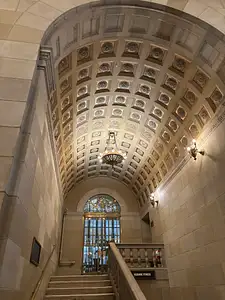
Debbie
Reviewed on:
Dec 3, 2025
Louis was a wonderful guide! Thank you Louis! We learnt so much about the history, politics, culture and economics of Montreal, Quebec and Canada
Karina
Reviewed on:
Oct 28, 2025
Excellent tour with very knowledgeable guide!
Audrey
Reviewed on:
Oct 22, 2025

